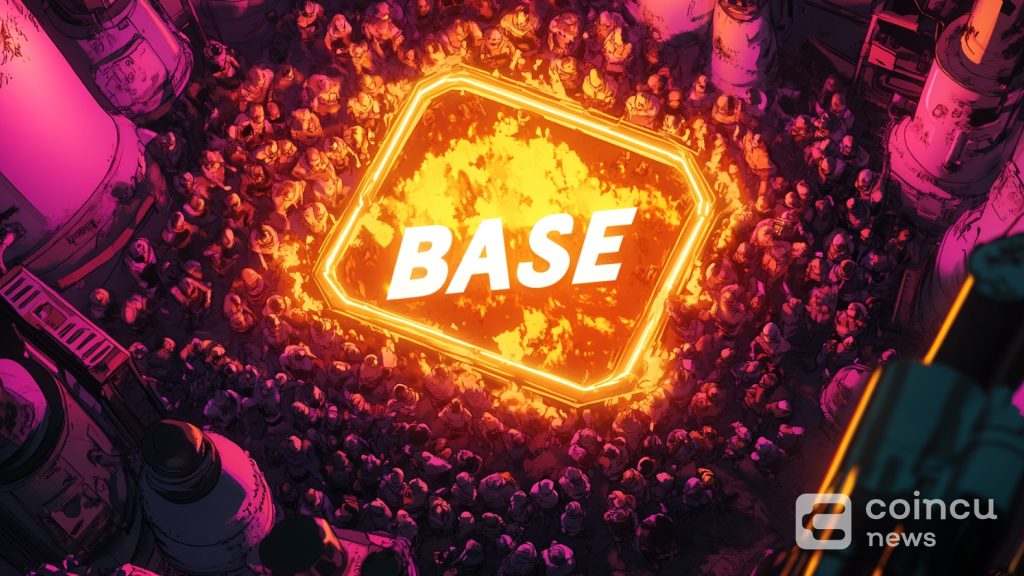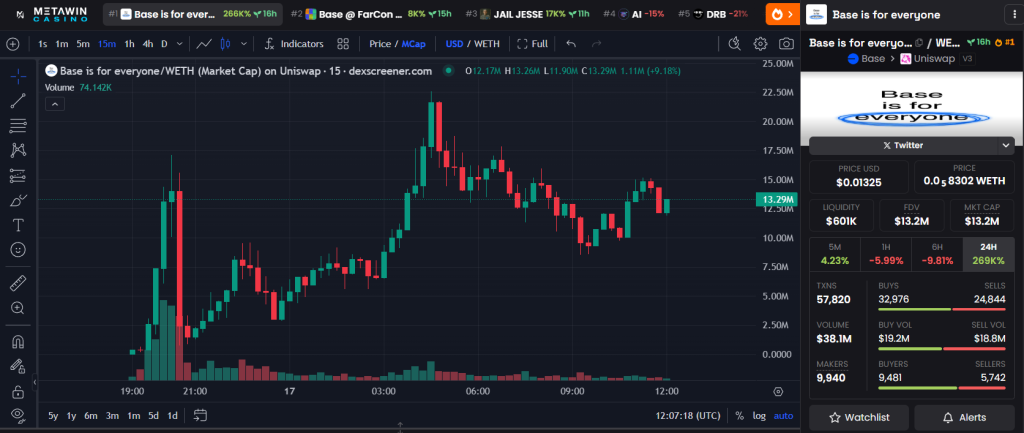| Key Points: – Base is for everyone Tokens caused a 92% crash hours after going live. – The token was auto-minted via Zora, not officially launched by Base. – Three wallets profited over $660K, sparking insider trading suspicions. – Base faces backlash for unclear messaging and triggering retail FOMO. |

Base is for everyone Tokens debuted through an experimental Zora post, briefly surged to a $13M market cap before crashing and igniting controversy.
The incident highlights a growing concern over unintentional token creation through on-chain platforms, exposing retail traders to volatility and raising questions about ethical boundaries in decentralized experimentation.
Base is for everyone Tokens: From Meme to Mayhem
On April 17, 2025, Coinbase-backed Layer-2 network Base ignited a firestorm with a simple post: “Base is for everyone.” Shared on the on-chain social platform Zora, this post automatically generated a tradable ERC-20 token—dubbed the Base is for everyone Token—thanks to Zora’s content-to-coin functionality.
Though Base explicitly clarified that this was not an official token and was meant for creative purposes, the market took it differently.
Traders interpreted the post as a signal of institutional support, fueling a frenzy that pushed the Base is for everyone tokens’ market cap to $13 million within minutes.
But the hype was short-lived. Within hours, the token’s value nosedived by over 92%, leading to accusations of manipulation, poor communication, and even soft rug pulls.

Onchain Data Fuels Insider Trading Accusations
Despite Base’s disclaimer, wallet activity suggested otherwise. On-chain sleuths, including Hantao Yuan and Lookonchain, pointed to three wallets that bought massive amounts of Base is for everyone Tokens minutes before Base’s post—and sold them during the peak, netting a combined profit of over $666,000.
- Wallet 0x0992 turned $2.4K into $170K.
- Wallet 0x5D9D made $266K from a $1.6K buy-in.
- Wallet 0xBD31 pulled in $231K from a similar investment.
These suspiciously timed transactions led to widespread speculation of insider trading. With over 2,500 wallets affected and nearly half the token supply concentrated in just three addresses, many in the community felt blindsided. Compounding the situation were bot-driven trades artificially inflating volume and distorting price charts before the inevitable crash.
Content Coins or Chaos? Base’s Vision Sparks Debate
In the aftermath, Base’s creator Jesse Pollak took to X to defend the experiment. He emphasized that Base is for everyone Tokens weren’t investments, but part of a broader movement to “bring content onchain” via a new paradigm called content coins. According to Pollak, this wasn’t a memecoin—it was an attempt to tokenize creativity itself.
Still, the backlash was swift and brutal. Critics, including pump.fun founder Alon, argued that Base had violated unspoken norms of crypto culture: don’t mix hype with influence, don’t talk price, and don’t shill if you’re in a position of power. Many felt the post should’ve included clearer warnings to avoid retail FOMO.
Despite the chaos, the Base is for everyone Tokens made an unexpected recovery, regaining their $13.4 million market cap just hours after the crash. Whether it’s a fluke or a glimpse of the future, the controversy has undeniably put content coins in the spotlight, forcing the industry to reconsider how creativity, culture, and tokenomics intersect.
| DISCLAIMER: The information on this website is provided as general market commentary and does not constitute investment advice. We encourage you to do your own research before investing. |























